These healthy and delicious sourdough English muffins are a super simple no-knead recipe. Just mix up the night before and cook in the morning for a yummy breakfast. This is seriously the easiest English muffin recipe around.
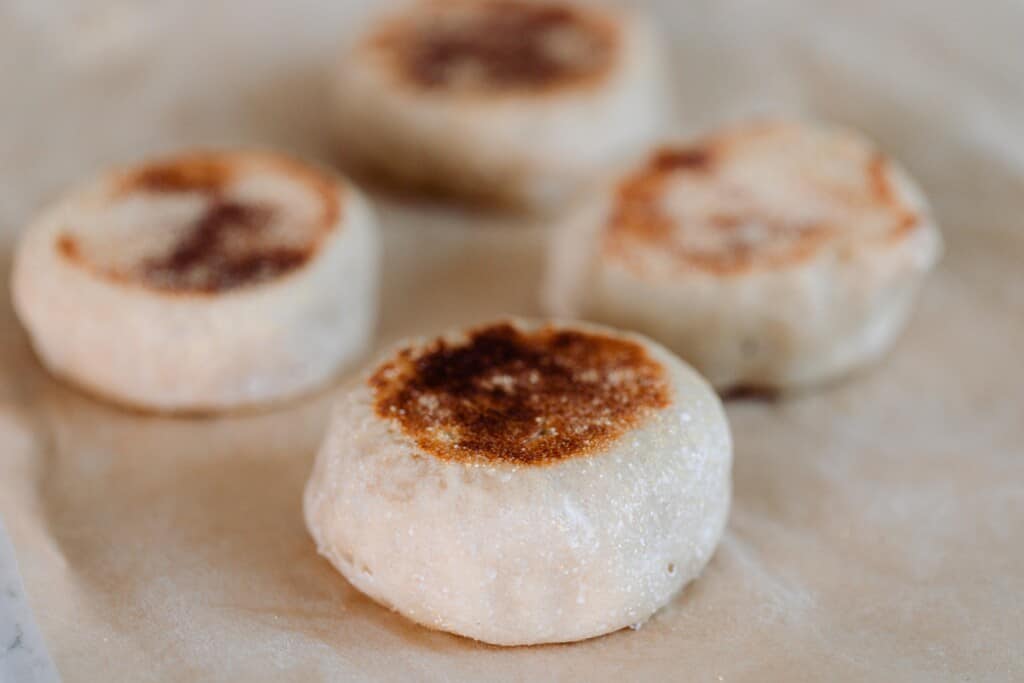
Table of Contents
I have already confessed my sincere love for my bubbly 9 year old sourdough starter that I talked about in this post.
I use it in my kitchen often. Pancakes, english muffins, waffles, cinnamon rolls, coffee cake… I have even attempted Sourdough Doughnuts.
I love the way sourdough adds a depth of flavor to baked goods that just isn’t there in store-bought bread products.
Plus, I have a satisfaction cooking with a starter that I made and maintain with my own two hands. I hope to pass it down as a family heirloom.
To me, it is valuable to learn how to make something in your own home that you just can’t buy in the store. Artisan style.
I get really excited by things like this.
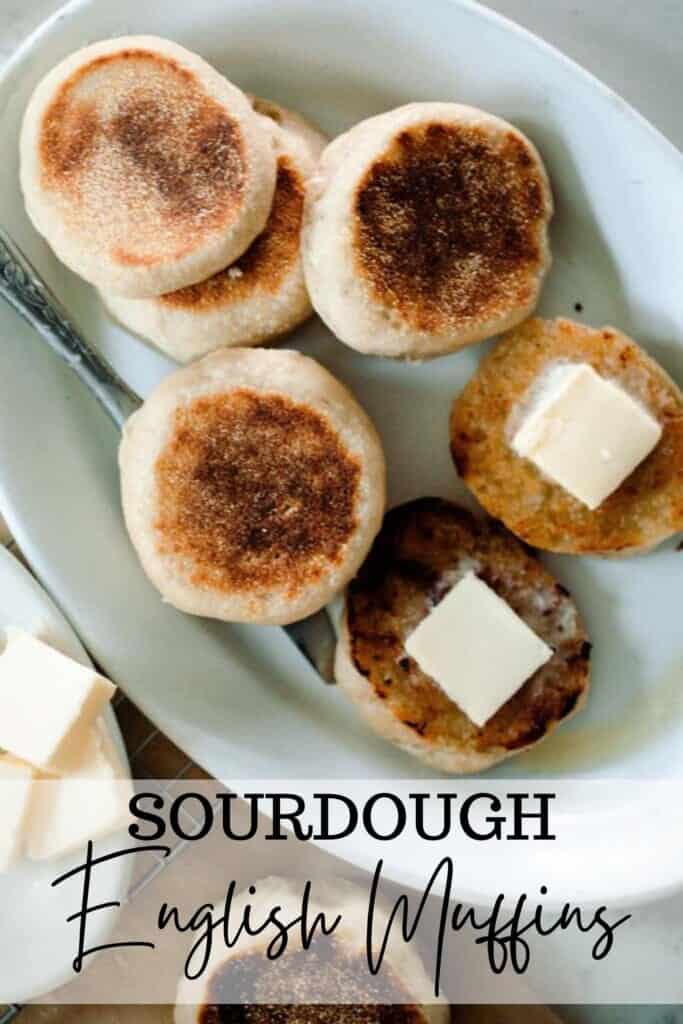
Why Sourdough?
Grains have gotten an undeserved bad rep in the health food community.
Have you ever heard of phytic acid? Basically, it’s an antinutrient found in grains, beans, and nuts that interferes with the absorption of certain nutrients. They are present on grains to keep them from spoiling.
There is a reason they are there, but there is also good evidence that our bodies weren’t meant to handle them. Proper preparation of grains eliminates most, if not all, of the phytic acid in offending foods.
But, did you know that traditional cultures thrived on grains? The key difference between the way they consumed grains then, and the way we do in our modern society now, can be summed up in two words: proper preparation.
It was necessary for folks to ferment grains for them to rise into delicious bread. Before yeast was isolated and sold in little packets, sourdough starter was a valuable commodity in homes and families, passed down for generations.
These days we’ve lost that art. And, what have we found? People can’t handle grains anymore.
Read more about sourdough starter, how to make it, and why I love it HERE.
But for now, let’s talk about the topic at hand.
Are sourdough English muffins good for you?
Yes! Not only are they easier to digest than standard English muffins made from non-fermented wheat, but they also contain more nutrients that your body can more easily absorb, such as fiber, and are a good source of B vitamins.
They are more nutritious because phytic acid is broken down during the fermentation process. Phytic acid is an anti-nutrient that binds to the nutrients in grains (and other foods like nuts, beans, and seeds) that prevent absorption.
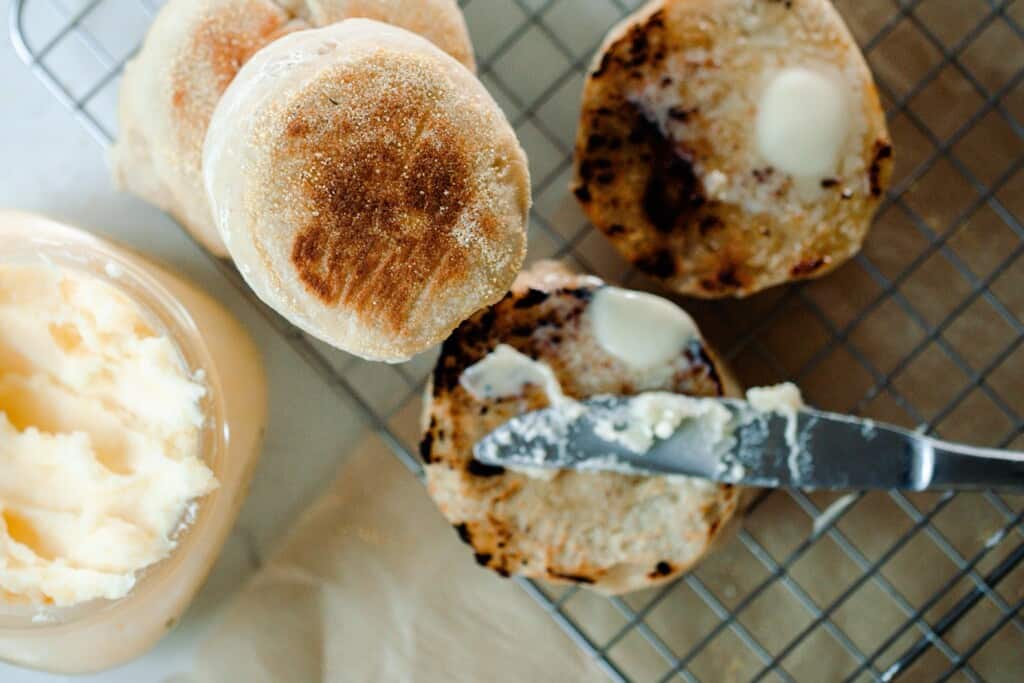
Why you will love this recipe:
I love Sourdough English Muffins because they taste like bread and work like bread, but take about 1/10th of the work that making regular sourdough bread takes.
And for this busy momma, that’s a recipe for a great… well… recipe.
I can whip them up in no time. And my family can enjoy a healthy bread that is so much cheaper than sprouted whole grain bread from the store.
Sourdough English muffins work great for sandwiches with meat and cheese, or smothered in butter and honey for breakfast.
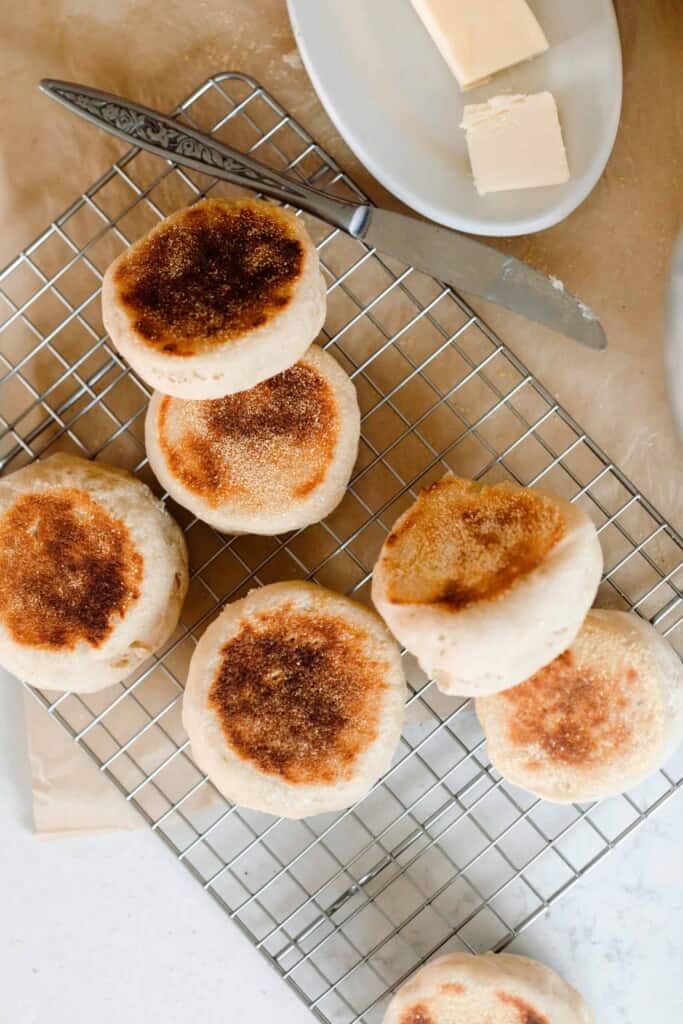
Tips For Making Sourdough English Muffins
- When cooking this recipe, the skillet needs to be hot before adding the English muffin dough so that it doesn’t stick, but then needs to be quickly reduced so they have a chance to rise and cook through.
- Make sure the sourdough starter you are using is nice and active. This will give the dough those beautiful bubbles.
- The type of flour you use, as well as humidity and quality of the starter, will cause each batch to need slightly different amounts of flour. If the dough seems too runny, add a bit more flour.
- The fermentation time will depend on how warm your house is. The cooler your house, the longer it will take for the dough to double, compared to a warmer house.
- You can substitute milk for water.
- You can skip the second rise as long as you add in the baking soda. Alternatively, you can do no baking soda and allow them to rise for an hour after dividing/shaping, before cooking.
This post contains affiliate links, which means I make a small commission at no extra cost to you. See my full disclosure here.
Tools you may need:
Lid
Large bowl
Measuring cups and spoons
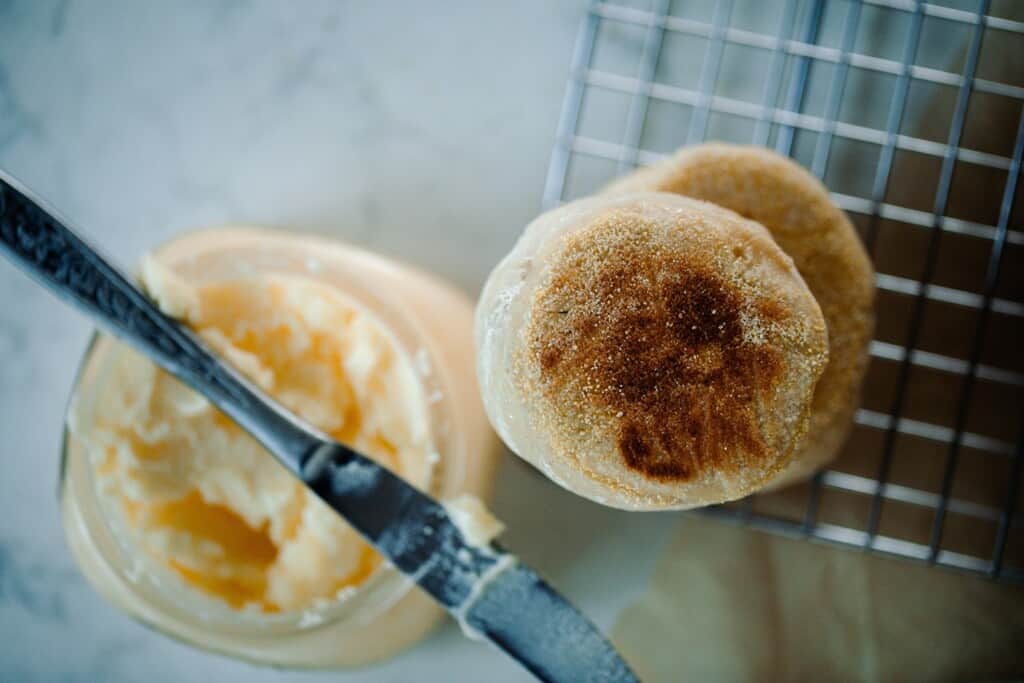
How to Make Sourdough English Muffins
The night before you want sourdough English muffins, stir in a glass bowl: flour, water, and active sourdough starter. This is sourdough starter that has been fed 4-12 hours before starting the recipe, and is nice and bubbly.
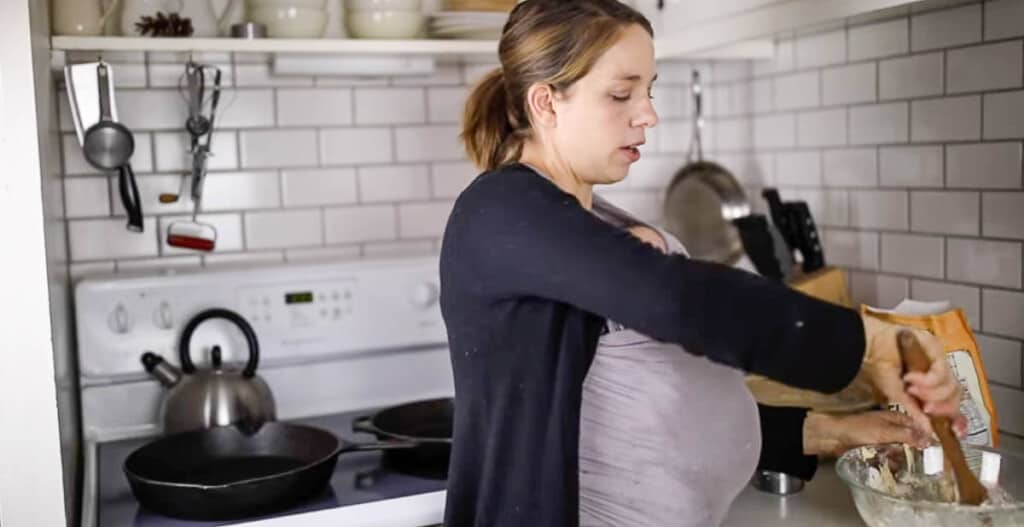
Cover it with a towel and let it sit at room temperature for 12-24 hours. You can get away with a longer rise time in the cooler months, and the fermentation process can take less time in the summer if your house is hot.
This is what mine looked like after 24 hours in a 68-70 degree house.
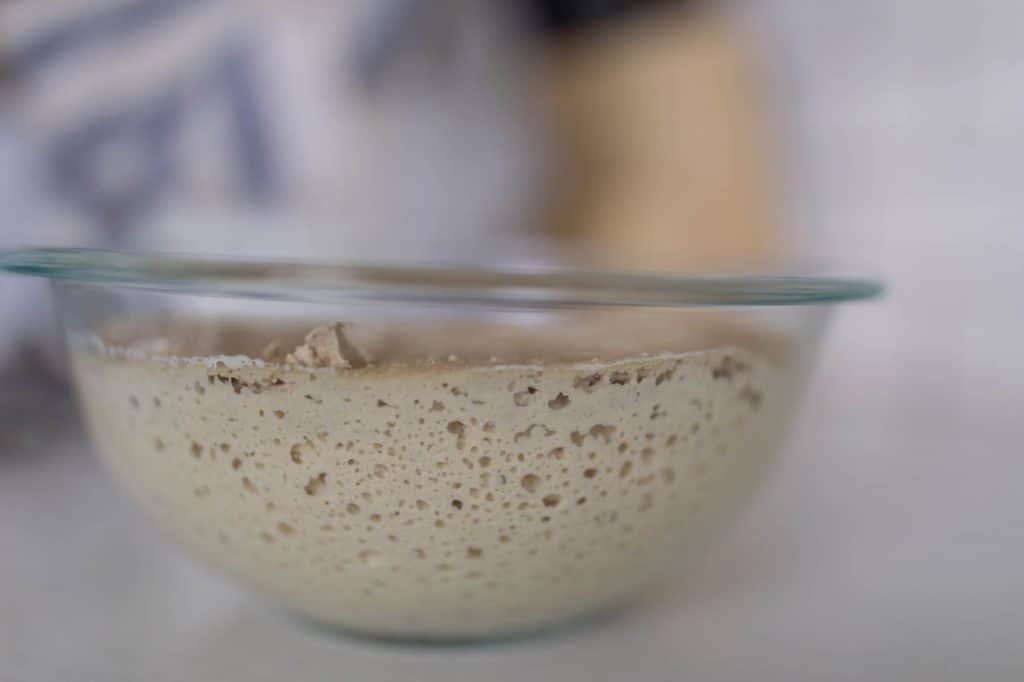
Look at those delicious bubbles!
NOTE: This recipe was updated in October 2021 to add a bit more flour, after several readers commented that the English muffins were turning out more like pancakes. As with any recipe, the type of flour you use, as well as humidity and quality of the starter, will cause each batch to need slightly different amounts of flour.
As you get familiar with this recipe, you will know exactly how much flour is needed by feel. If your English muffins are turning out like pancakes, you definitely need more flour. They should not be flat.
Also, cooking technique does have a lot to do with it. The dough needs to hit a hot cast iron skillet, so that it doesn’t stick, but then the heat needs to be quickly reduced so they have a chance to rise and cook through!
After Fermentation:
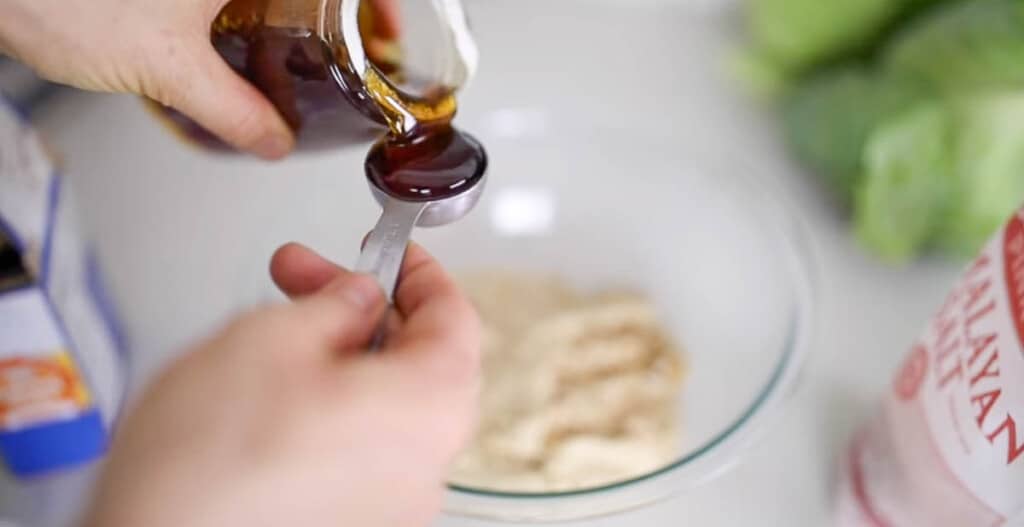
After the dough has fermented, add honey, salt, and baking soda.
Preheat your cast iron skillet on low and add a little coconut oil.
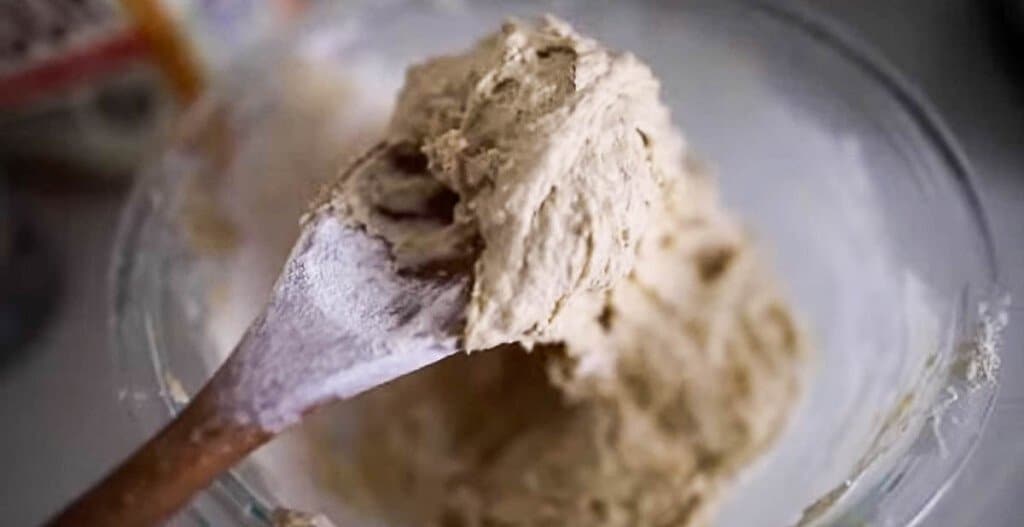
Mix the ingredients together until they are fully incorporated. You will probably have to use your hands for this, as the dough will be pretty thick. If the dough feels runny, add a bit more flour. It should be workable, yet not stiff. If the English muffins turn out flat like pancakes, it is a good indication they need more flour.
Divide the dough into 12 equal parts.
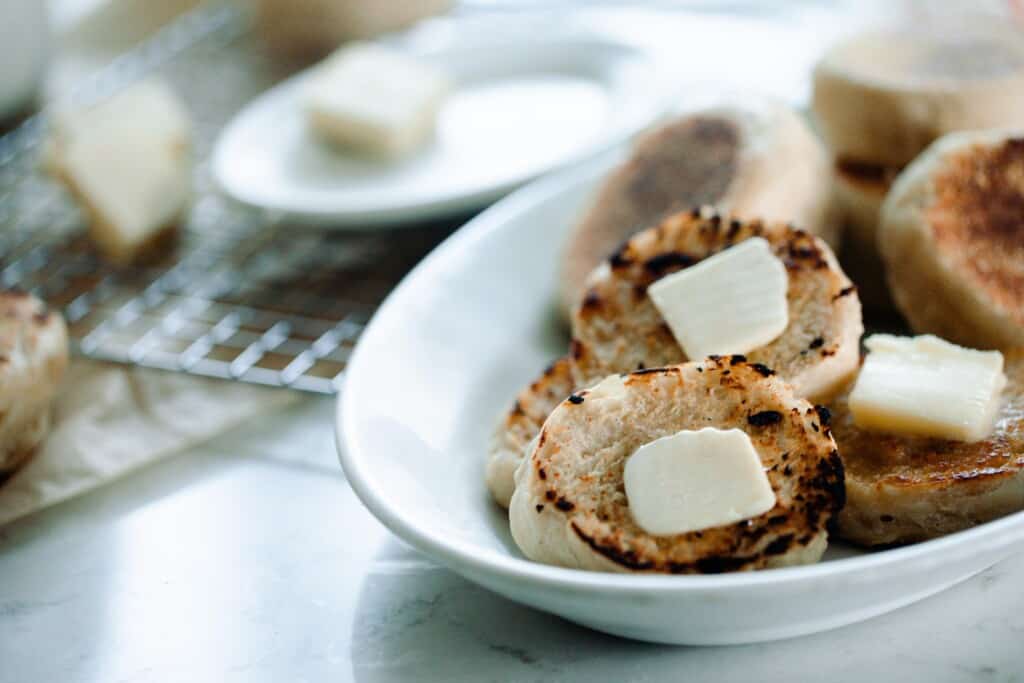
Drop it in a hot cast iron skillet.
Reduce the heat to low for about 10 minutes so the dough has a chance to rise.
Let them cook until doubled in size. Turn the skillet up to about 3 or 4 (not quite medium) and continue to cook until they are browned slightly on the bottom.
Don’t try to flip them until they come up easily from the pan. The goal is to only flip them one time.
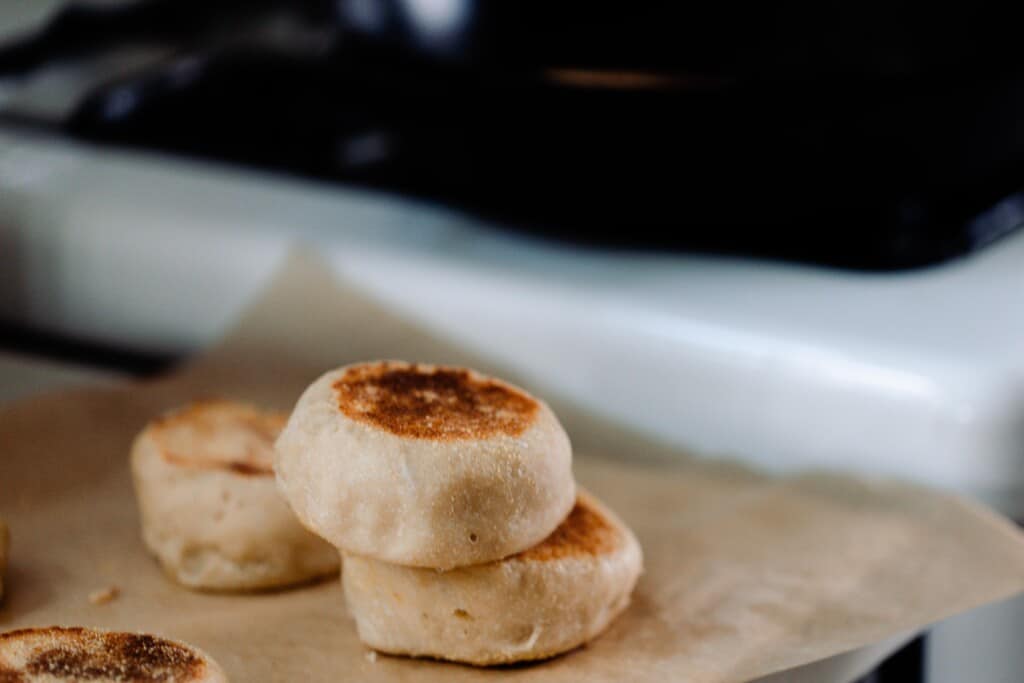
Cook them on the other side until browned.
These English muffins have a tendency to cook on the outside before the inside is fully done. So, be sure to not turn the skillet up too high. If they are browned on the outside, but still not done on the inside, throw them in a 250 to 300 degree oven for 10 minutes or so.
After they are cooked all the way through, slice them open and enjoy!
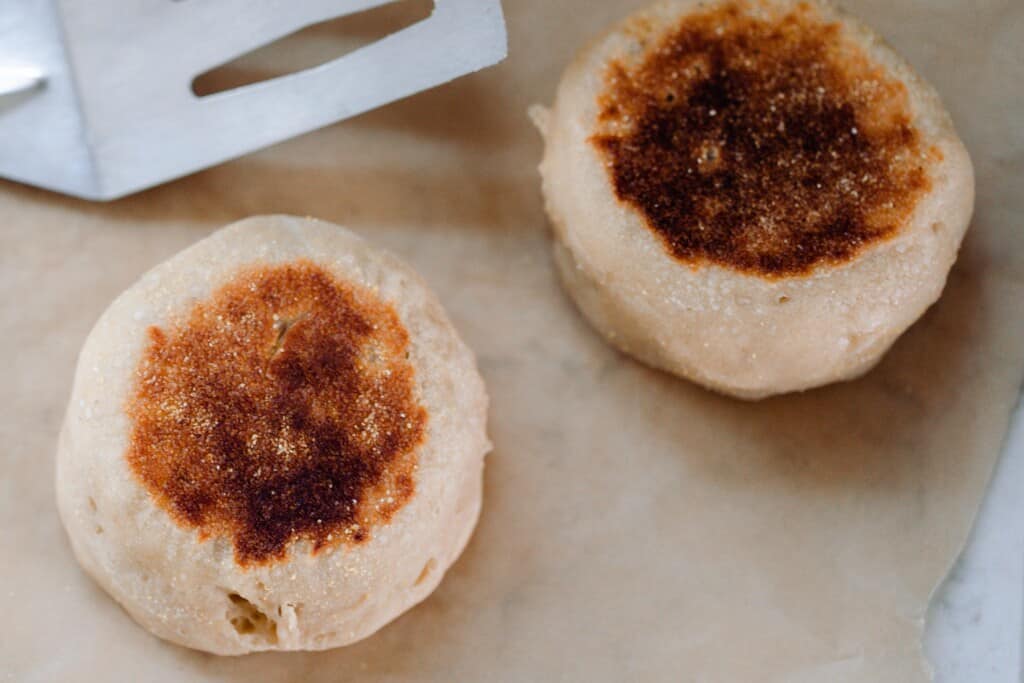
How To Make Sourdough English Muffins Without Baking Soda
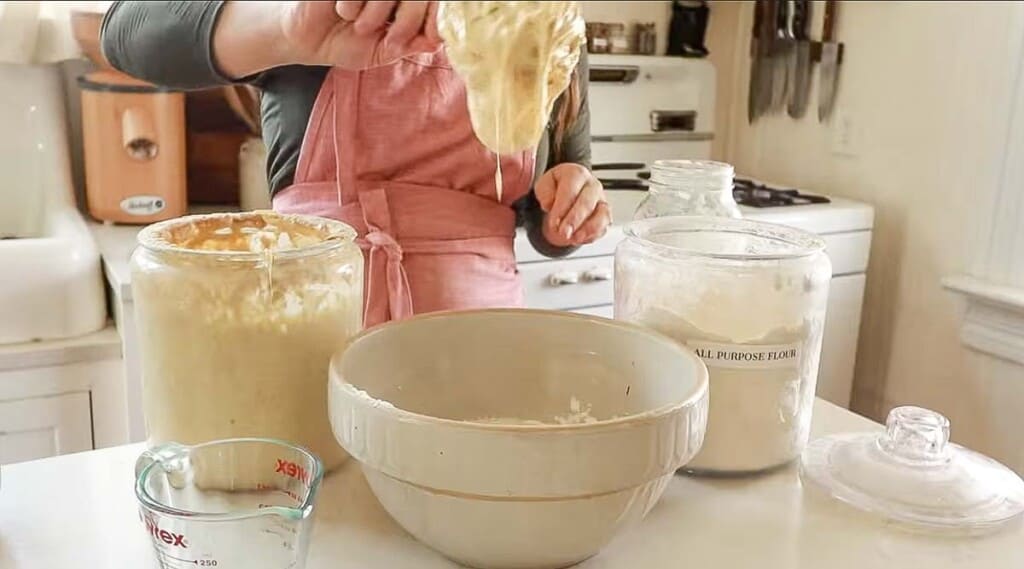
Add all ingredients to a bowl and mix together (minus the baking soda). Allow the dough to rest for 30 minutes; this is called autolyse. This is the process of allowing the dough to rest so the flour has a chance to hydrate. Also, during this time the gluten starts to develop and the dough becomes stretchier.
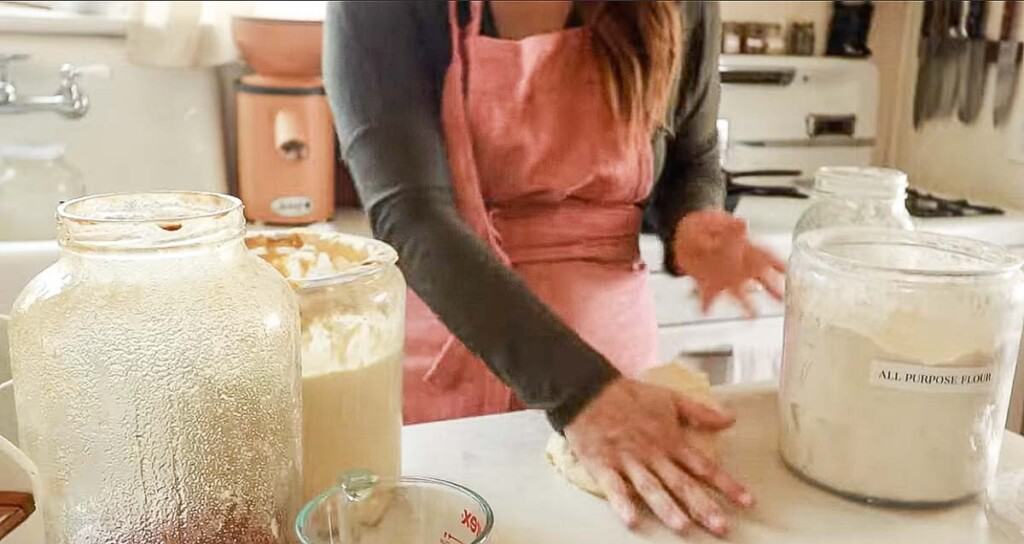
Knead for five minutes with hands on a lightly floured surface. Place dough in bowl and cover with a lid, or plastic wrap.
Bulk rise: 8-12 hours in a warm place. Dough should double in size. This also could be done in the refrigerator. The dough will be stiffer which makes rolling out a little easier.
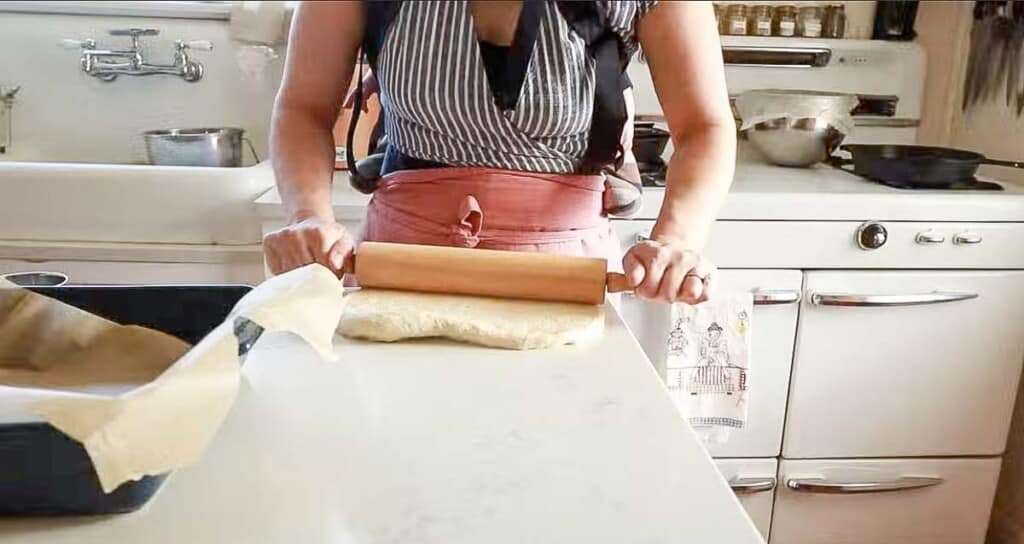
Shape by rolling out into a 1/2 inch thick rectangle.
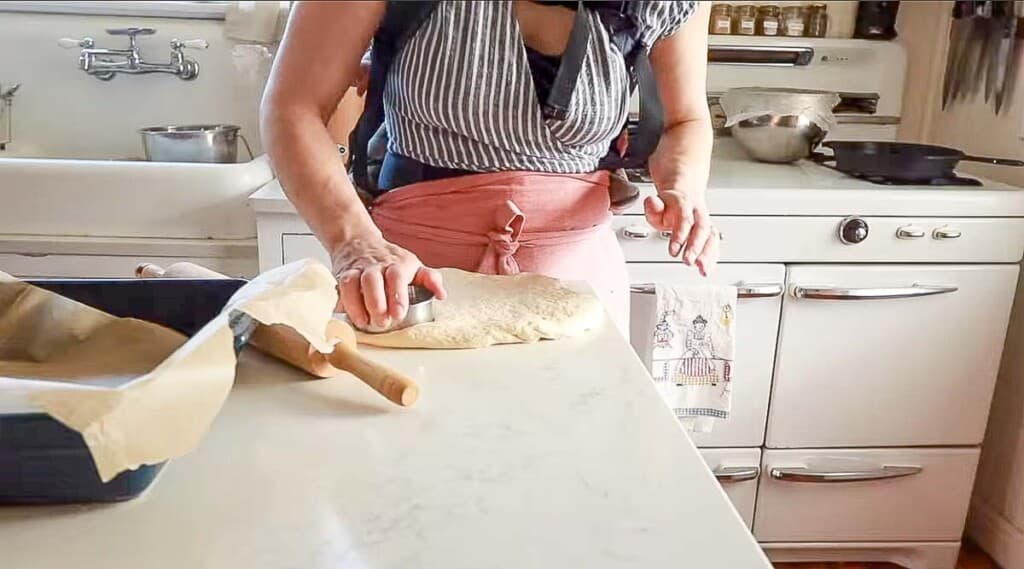
Cut out using a biscuit cutter or wide mouth mason jar.
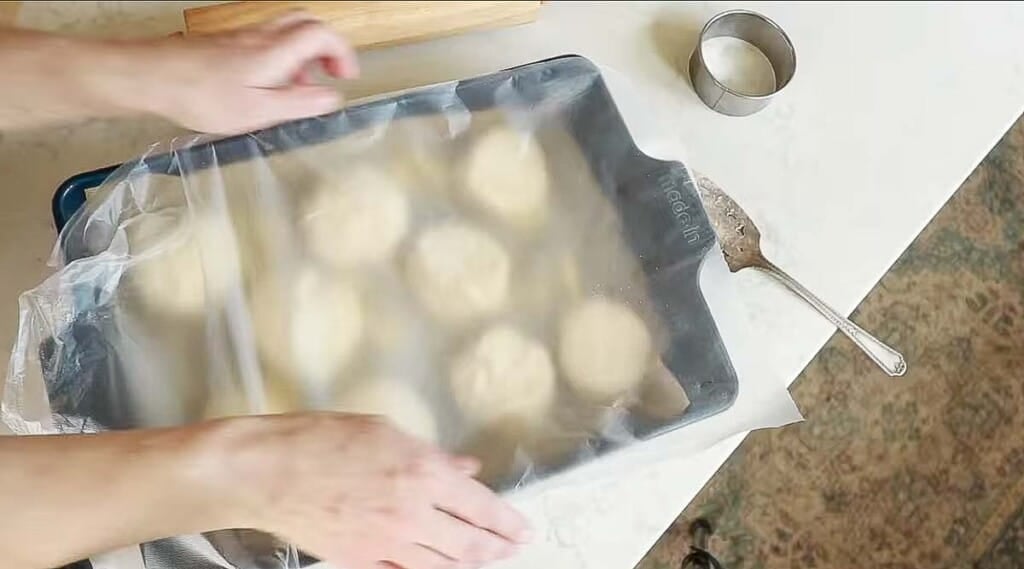
Place in a parchment lined baking dish with a little cornmeal sprinkled on the bottom (optional). Cover and rise again for about an hour in a warm place.
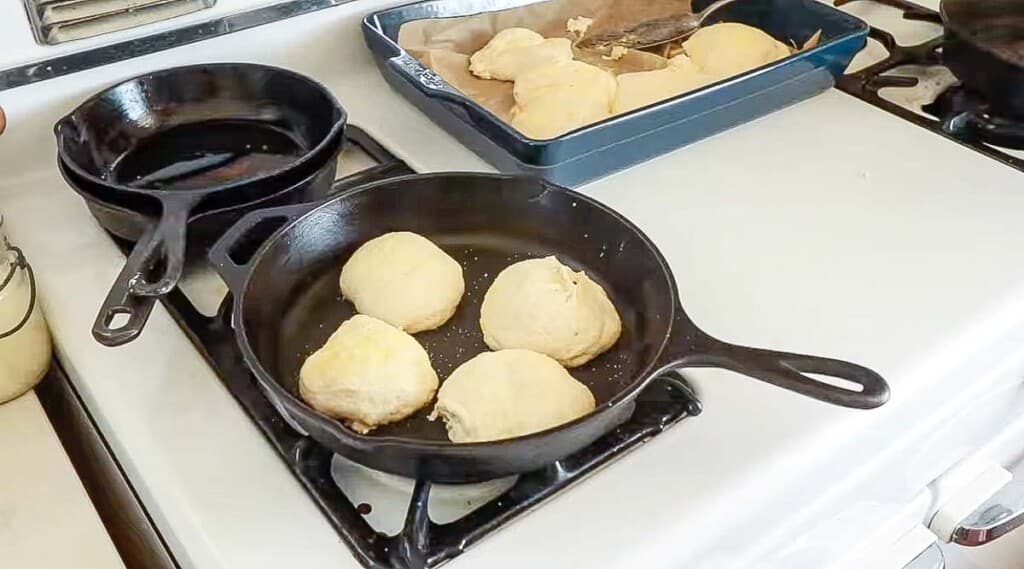
Cook in a cast iron skillet. Start the skillet really hot, add the English muffins, and turn down the heat immediately to low. Cover with a lid and allow to cook for about 5 minutes.
Flip and cook through until completely done – about another 5 minutes.
Place on a cooling rack for a few minutes before slicing. Serve with butter or homemade strawberry jam.
A Word On Flour
Over the years, I have fed my starter with all of the following at some point: freshly ground whole grain white flour that I ground in my own mill, all purpose flour, ancient einkorn, unbleached all purpose, store bought whole wheat flour… and probably some others I can’t remember.
The point is, my sourdough starter still bubbles away despite the flour choice. Use whatever flour you have, and enjoy your Sourdough English muffins!
Find More Delicious Sourdough Recipes:
- How to Make a Sourdough Starter from Scratch
- Sourdough Pizza Crust
- Healthy One Pot Meal- Sourdough Skillet
- Sourdough Tortillas
- Sourdough Hot Cross Buns
- Easy Sourdough Flatbread
If you make this recipe and love it, I would love if you gave it 5 stars! Tag me on Instagram @farmhouseonboone with your delicious creation.
Sourdough English Muffins

Video
Ingredients
- 2 1/2 cups flour
- 1 cup water
- 1/2 cup fed sourdough starter
- 1 tablespoon honey
- 1 teaspoon salt
- 1 teaspoon baking soda, optional, see notes
- coconut oil
Instructions
- The night before you want sourdough English muffins, stir in a glass bowl: flour, water, fed sourdough starter.
- Cover it with a towel and let it sit at room temperature for 12- 24 hours. You can get away with a longer in the cooler months and the fermentation process can take less time in the summer if your house is hot.
- After it has fermented, add to the mixture honey, salt, and baking soda*.
- Preheat your cast iron skillet on high and add a little coconut oil.
- Mix the ingredients together until they are fully incorporated. You will probably have to use your hands for this. The dough will be pretty thick. NOTE: If the dough feels runny, add a bit more flour. It should be workable, yet not stiff. If the English muffins turn out flat like pancakes, it is a good indication they need more flour.
- Divide the dough in 12 equal parts and drop each portion of dough into a hot cast iron skillet.
- Reduce the heat to low for about 10 minutes so the dough has a chance to rise.
- Let them cook until doubled in size. Turn the skillet up to medium/low and continue to cook until they are browned slightly on the bottom. Don’t try to flip them until they come up easily from the pan. The goal is to only flip them one time.
- Cook them on the other side until browned. These English muffins have a tendency to cook on the outside before the inside is fully done. So, be sure to not turn the skillet up too high. If they are browned on the outside, but still not done on the inside, throw them in a 250 to 300 degree oven for 10 minutes or so. Alternatively, you can put a lid on and allow them to cook on low.
- After they are cooked all the way through, slice them open and enjoy!
Notes
- Substitute milk for water if you would like.
- You can skip the second rise as long as you add in the baking soda. Alternatively, you can do no baking soda and allow them to rise for an hour after dividing/shaping, before cooking. See post for instructions.
- *This recipe was updated in October 2021 to add a bit more flour, after several readers commented that the English muffins were turning out more like pancakes. As with any recipe, the type of flour you use, as well as humidity and quality of the starter, will cause each situation to need slightly different amounts of flour. As you get familiar with this recipe you will know exactly how much flour is needed by feel. If your English muffins are turning out like pancakes, you definitely need more flour. They should not be flat.
- Also, cooking technique does have a lot to do with it. The dough needs to hit a hot cast iron skillet, so that it doesn’t stick, but the heat needs to be quickly reduced so they have a chance to rise and cook through!
Nutrition
Nutrition information is automatically calculated, so should only be used as an approximation.






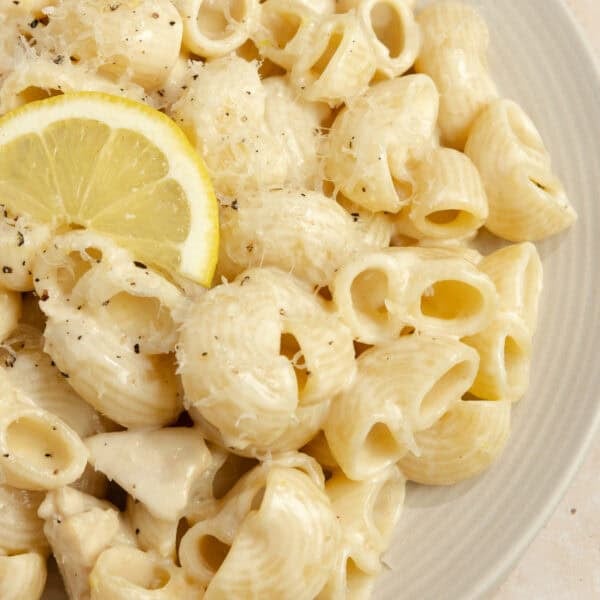









Hey Lisa!!
Thanks so much for sharing! It’s so encouraging to find like minded people. And I’m just loving your recipes! I started my started and I can’t stop baking!!! It’s all so delicious!
I was just curious how you store your baked goods; English muffins, tortillas….and for how long?
Thanks again for sharing!
-Diana
I usually just store them in ziplocks on the counter, because we never can keep them very long. My kids love baked kids! Haha. I should probably find a better solution than plastic, but thats what it is for now.
I have made your sourdough starter for the first time and it worked perfectly. However, I followed the English muffin recipe to a T and it was a very loose or slightly runny dough. Not just sticky but to soft to even pick up and put in my hand. I ended up adding nearly 2/3 C. of flour to make it work. Any idea what I did wrong? Thanks!
Thank you for your wonderful blog. I’m exploring and very much enjoying trying your recipes! Any way these muffins could be baked instead of cooked on the stove top? I’d love to be able to walk away from the stove with a timer to listen for!
I bake mine in the oven at 350 degrees and turn them over after about 10 minutes so they are flat on both sides. Otherwise they puff up a little in the middle. I put them back in for about 10 more minutes. You would need to watch them the first time and time them as everybody’s oven is different.
This is what I was wondering too! It seems easier for me to put them all at once into a cast iron and in the oven. I am going to try this so wish me luck! Lol
Can i freeze left overs?
Yes, you sure can!
Can I use almond flour to make these?
This is a weekly go-to in our home. I double the recipe and batch-make these for the week for breakfasts and use them for sandwiches for my husband’s lunches. I keep them in the freezer and pull as needed.
Hi! I have a sourdough starter question. This was my first time using it and I put my starter out on the counter yesterday and feed it. It was super happy and looked great,though I wanted to leave it fro 24 hours. I didn’t take in to acoxu t the temperature of the house which is closer to 78 or so. This morning, it was not even really bubbling and looked so sad. Did I kill it? On your video you talked about having all the good bacteria eaten up… But can I save it? I went ahead and took the 1/2 cup from it and made the proof for the muffins anyway. Will it work? Do I disguard the new mixture and retry something with my starter? Right now I just put the starter in the fridge. So, I’m confused and don’t really know what to do, so any help would be appreciated!! Thanks!
It should be totally fine! It won’t die that quickly.
Hi Lisa,
I really want to try this but if I don’t have a cast iron pan can I use a stainless steel pan?
Hey Megan! I am afraid they would stick to stainless steel.
They will not stick, just like the cast iron you let your stainless steel pain heat up on high then turn down to low to cool a bit then add your oil and you shouldn’t have any problems with them sticking unless you don’t let your pan heat up first
Hi Megan, I’ve just tried them with a stainless steel pan and it worked great. It’s a better quality one, though, it would definitely not work on my other, cheaper one.
Great to know! Thanks for sharing Dorothea!
Gluten free momma over here. Just made these with Pam’s bread flour and they came out great. (The sourdough starter was from that flour as well.) Be mindful that GF baking tends to be a bit more moist… this worked really well for me. Thanks for the recipe!
Awesome! Thanks for sharing!
Lisa, I did everything the way you described but my dough was sooooo sticky. It’s like I didn’t have enough flour or something. Any thoughts on what I did wrong? :/
Try adding a little more flour next time. It definitely depends on hydrated your starter is.
I am having a hard time getting my english muffins to rise. I’m doing everything correct for the recipe and my start looks like it is supposed to. They just don’t rise and turn out as flat as a pancake almost. Do you have any ideas?
Try putting them in the cast iron skillet on a super low temp and allow them to rise for a bit there. As long as the cook slowly they should rise.
I have noticed that if the starter is really broken down then the dough is more liguid-y… I speculate that the starter needs to be refreshed and/or less proofing time. There needs to be gluten proteins/sugars left for the bacteria/yeasts to eat to get the rise.
Hi. I love this recipe, it was amazing!!!! I shared it with everyone i know who has a sourdough starter!!!!
But I have a question: i onky have my starter for about 5 months, its still pretty liquid, I noticed yours is much thicker. Now my English muffins were pretty flat and I had a hard time getting a good rise. Do you have any suggestions? What are your approximate measurements when you feed your starter? Mine has a consistency of a really thick pancake batter. And my engkish muffin dough turned out about the same… Very very stretchy and sticky but not like a real dough… Seems less firm than yours even though I used the exact measurements.
Thank you
Same Flora, mine is drippy. I want to add more flour but feel like that defeats the purpose of letting it sit so long to sour.
Hello everyone! Same here, it is still pretty liquid. The recipe is so delicious, but my english muffins are flat.
Try using some whole wheat flour when you feed your starter. I use 60-40 Ap to WW.
My sourdough starter was also very liquidy. I started feeding it a bit more flower than water and now it is a lot thicker and still very healthy or maybe even healthier.
My english muffins were also very flat in the beginning. Now I add a bit more flower if I see that the batter is a bit runny.
i used a starter guide from “the perfect loaf” and have an amazing and healthy starter. to maintain, i use a 50/50 percentage mix of milled rye and AP flour, then 100% water. you can adjust the grams based on how much discard and usable starter you want/need for your use.
if you use too much water in feeding your starter it will be too liquid. or, if you don’t feed it enough, based on how you store it, you will have more liquid.
hop that helps!
I read the sourdough starter guide and was surprised to see the measurements listed in cups, not grams. The other sourdough starter recipes I’ve read instruct you to add equal amount of flour and water by weight not mass. So rather than adding a cup each of flour and water, I’ve been adding 40 grams each of flour and water.
Hi Lisa,
I have recently discovered your site and am so happy that I did!!
I am making sour dough starter now. I started it Sunday night. I am concerned, though, because our house isn’t always real warm. Is there something that I can do to insure that the starter stays warm enough to do what it is supposed to do?
Thank you so much,
Carolyn in not so warm Florida.
Not warm in Florida?! That’s a bummer. Do you have a stove you could set it on, or maybe the oven with a pilot light on? Or possibly on a heating pad with a towel over it. If your house is close to 70 it should be totally fine. You definitely don’t want it too warm.
Put it in your microwave with the light on. It should hit between 75-80 deg F in there.